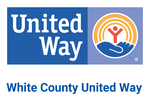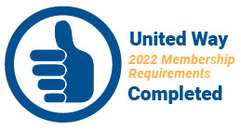|
In previous articles we discussed how the current opioid crisis did not happen overnight. A series of events, perceptions and policies brought us to this place where Americans are more likely to die of an overdose than a car accident. The death toll is equivalent to a fully loaded 737 falling from the sky and killing everyone on board 365 days a year. https://www.clarionledger.com/story/news/2018/01/26/opioid-epidemic-solutions-naloxone-overprescribing-overdose-deaths/964288001/. As a local school counselor asked in the face of this crisis: “What can we do to make a difference?” The good news is exciting things are beginning to happen nationally, at a state level, and locally.
Development in brain research began exploring the effects of substance abuse on the structure and wiring of the brain. Scientists have learned how substances such as opioids change the chemistry of brain synapses, creating a chemical desire for the drug. Drug use changes the areas of the brain related to motivation, problem solving, and impulse control. This better understanding of how addiction affects the brain is aiding in the development of evidence-based treatment options. On a policy level, many things are happening to decrease the negative impacts of substance use in Indiana. The INSPECT prescription monitoring system keeps track of the number of opioid prescriptions written by doctors and filled by patients. Just the awareness that someone is watching, has led to a 35% decrease in the number of opioid prescriptions doctors have written since 2013. https://www.ibj.com/articles/74228-report-indiana-opioid-prescriptions-down-35-since-2013 Narcan is saving lives. Narcan is an opioid overdose reversing agent. If used within six minutes of an opioid overdose, restore breathing and prevent death. As the mother of an addicted child said, “Dead people don’t enter recovery.” Narcan is now available without a prescription and can be purchased at local pharmacies. Many health departments can provide it free to families of those involved in substance use disorder. With the prevalence of fentanyl, some say that it is prudent for families with a loved one using any illicit drugs to have Narcan on hand. There are more and more opioid treatment centers opening around the state. In 2018, there were 18 opioid treatment programs in Indiana. By 2020, ten additional sites will open. Governor Holcomb’s goal is to have an opioid treatment program within an hour’s drive of every Hoosier. In addition to reducing the number of opioid prescriptions written, another positive response is the number of drug take-back containers and programs. Over 50% of people who misuse substances get them from the medicine cabinets of friends and family. Here in White County, there are drug take back containers in the lobbies of the Monticello City Police as well as the White County Sheriff’s Department. Indiana Medicaid/HIPP is providing coverage for substance abuse treatment and MAT (medication assisted treatment, providing more access to those in need of services. Probably, most importantly, people are becoming educated about opioids, addiction and treatment. Public opinion is beginning to accept the disease model of addiction, understanding how brain chemistry and changes influence behavior in addiction.
1 Comment
Wow, I never heard of medication-assisted recovery before but it does look very promising, especially how it's basically helping a patient have as little chance of relapse as possible. A friend of mine once expressed to me her desire to come clean of marijuana. I should probably suggest this kind of treatment for her.
Reply
Your comment will be posted after it is approved.
Leave a Reply. |
AuthorLynn Saylor is the AmeriCorps member working with the United Against Opioid Abuse Initiative alongside the White County United Way. She is a major facilitator of the United Council on Opioids serving White County and a regular contributor to local media. Archives
October 2020
Categories
All
|

 RSS Feed
RSS Feed
